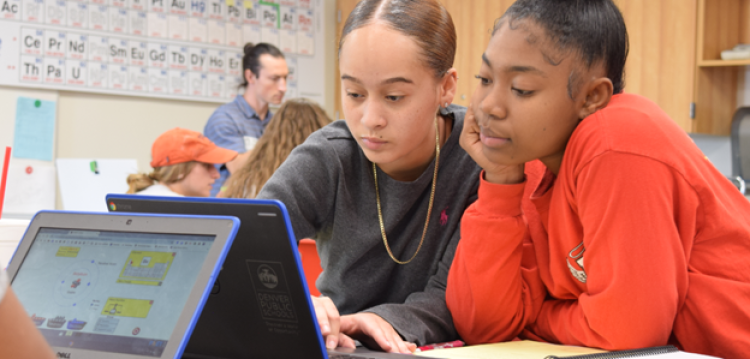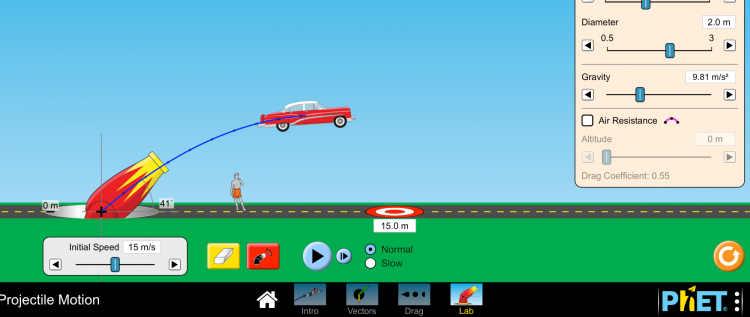PhET simulations keep students engaged while learning science remotely
CU Boulder’s PhET Interactive Simulations are providing critical support to teachers, students and parents during the COVID-19 pandemic
As schools adapt to the new normal of teaching remotely, teachers—particularly science teachers—need innovative approaches to keep students engaged. And one way they are finding that is through PhET Interactive Simulations.

Since the COVID-19 pandemic began and schools were forced to shift to remote learning, PhET—a University of Colorado Boulder STEM (or science, technology, engineering and mathematics) education project—has seen the usage of its free, interactive science simulations increase substantially across the globe, with use in hard-hit countries like Italy and France increasing by 500%.
“As schools around the world switch to remote learning, many teachers, students and parents who might not have used any science or math simulations before are now discovering and using PhET’s library of simulations for the first time,” said Kathy Perkins, director of PhET Interactive Simulations.
“It’s been a challenging time for everyone involved, and we’re happy we can play a part in providing solutions.”
PhET, which originally stood for “Physics Education Technology,” was started in 2002 by Carl Wieman, a former CU Boulder physics professor and one of five Nobel Laureates from the university, when he saw the educational force of physics simulations.
While PhET originally focused solely on physics simulations and education, today it is a pioneering science and math educational resource that seeks to improve STEM literacy and accessibility across the globe by covering topics ranging from atoms to algebra.
Since its launch, PhET’s simulations, which number over 100, have been translated into 90 languages and used in more than 200 countries and territories. PhET has also begun to work with commercial partners like BrainPOP, Nearpod and Pearson to integrate their simulations into more teaching products.
I think one of the simulations’ greatest values during this time is their ability to continue to engage students’ curiosity in science and to enable their exploration of scientific phenomena in ways that are consistent with science practices"
Before the pandemic, Perkins says that teachers would often use a combination of PhET simulations, lab equipment, demonstrations and classroom activities. Without access to their classrooms, though, teachers are turning to PhET or other online simulations as a key resource that can continue to provide opportunities for students to engage in science or math.
And this has translated into an increase in usage. Since the outbreak began, PhET has seen over 4 million uses every week and increases in usage across Europe. While in the United States, where many teachers already used PhET simulations during classroom instruction, the online software has allowed teachers to continue with similar lessons now with students at home.
“The simulations that PhET offers are an excellent way to make sure that students can get the lab hours that they need. If I were to do some other sort of lab that required certain materials, I can’t guarantee that all of the students in their home might have all of those materials. … To have the online simulation with everything they need ready to go is amazing,” said Andrew Wallace, a physics teacher at World View High School in the Bronx, an area hard hit by the coronavirus pandemic.
“PhET really streamlines everything. Right now, everybody just has such high stress levels, and any way that we can reduce that stress is worth it, so having everything ready to go is great at reducing that stress.”
In response to the immediate needs of teachers and commercial partners since the pandemic began, PhET has expanded their capabilities. They’ve begun creating lessons for remote learning, adding Google Doc capability to their lesson database, sharing teacher tips for using PhET with remote lessons, releasing prototype simulations, and introducing new technology to improve ease of access to their older simulations.

A screenshot of the Projectile Motion simulation depicts a vintage car being shot from a cannon over the likeness of Michelangelo's David.
“I think one of the simulations’ greatest values during this time is their ability to continue to engage students’ curiosity in science and to enable their exploration of scientific phenomena in ways that are consistent with science practices,” said Perkins.
“How do you explore something? What questions do you ask? What evidence do you collect? How do you present that evidence? How do you explain things? Giving them something that provides that hands-on type of experimentation but in a situation where a teacher cannot provide that hands-on experience.”
Jacqui Hayes, an education technology consultant that works with PhET, agrees:
“For many years, PhET has been pushing the boundaries of digital science education. It’s a really tough challenge,” she says.
“All of a sudden, teachers no longer have their classroom and have to rely on digital activities. Through this experience, I think people have realized just how hard it is to create true inquiry activities in the digital environment, and this is part of the reason why even more people are turning to PhET than ever before. This definitely is the best way we know to teach science online.”
And Perkins is hopeful that even beyond the pandemic, the increased demand will continue:
“Once teachers have returned to the classroom, we hope that they continue to use PhET simulations and see the value of incorporating digital science inquiry into their teaching.”
Learn more about online educational resources offered by the University of Colorado Boulder to the community, like PhET Interactive Simulations, on the Community Outreach and Engagement Programs website.

